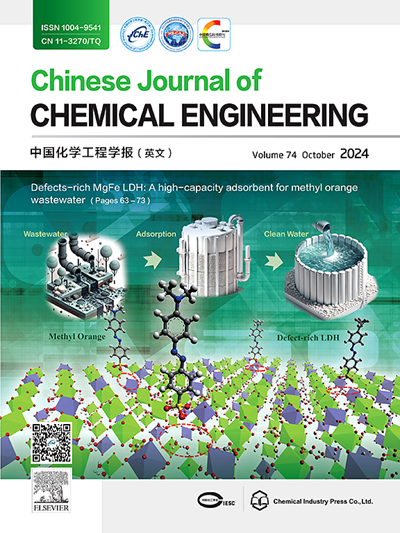Bayesian optimization of operational and geometric parameters of microchannels for targeted droplet generation
IF 3.7
3区 工程技术
Q2 ENGINEERING, CHEMICAL
引用次数: 0
Abstract
Integrating Bayesian Optimization with Volume of Fluid (VOF) simulations, this work aims to optimize the operational conditions and geometric parameters of T-junction microchannels for target droplet sizes. Bayesian Optimization utilizes Gaussian Process (GP) as its core model and employs an adaptive search strategy to efficiently explore and identify optimal combinations of operational parameters within a limited parameter space, thereby enabling rapid optimization of the required parameters to achieve the target droplet size. Traditional methods typically rely on manually selecting a series of operational parameters and conducting multiple simulations to gradually approach the target droplet size. This process is time-consuming and prone to getting trapped in local optima. In contrast, Bayesian Optimization adaptively adjusts its search strategy, significantly reducing computational costs and effectively exploring global optima, thus greatly improving optimization efficiency. Additionally, the study investigates the impact of rectangular rib structures within the T-junction microchannel on droplet generation, revealing how the channel geometry influences droplet formation and size. After determining the target droplet size, we further applied Bayesian Optimization to refine the rib geometry. The integration of Bayesian Optimization with computational fluid dynamics (CFD) offers a promising tool and provides new insights into the optimal design of microfluidic devices.

目标液滴生成微通道操作参数和几何参数的贝叶斯优化
将贝叶斯优化与流体体积(Volume of Fluid, VOF)模拟相结合,对t结微通道的运行条件和几何参数进行了优化。贝叶斯优化以高斯过程(GP)为核心模型,采用自适应搜索策略,在有限的参数空间内高效地探索和识别运行参数的最优组合,从而实现所需参数的快速优化,以实现目标液滴尺寸。传统方法通常依赖于手动选择一系列操作参数并进行多次模拟来逐渐接近目标液滴尺寸。这个过程非常耗时,而且容易陷入局部最优状态。相比之下,贝叶斯优化自适应调整其搜索策略,显著降低了计算成本,有效地探索了全局最优,从而大大提高了优化效率。此外,该研究还研究了t结微通道内矩形肋结构对液滴生成的影响,揭示了通道几何形状如何影响液滴的形成和大小。在确定目标液滴尺寸后,我们进一步应用贝叶斯优化来优化肋的几何形状。贝叶斯优化与计算流体动力学(CFD)的结合为微流控器件的优化设计提供了一个有前途的工具和新的见解。
本文章由计算机程序翻译,如有差异,请以英文原文为准。
求助全文
约1分钟内获得全文
求助全文
来源期刊

Chinese Journal of Chemical Engineering
工程技术-工程:化工
CiteScore
6.60
自引率
5.30%
发文量
4309
审稿时长
31 days
期刊介绍:
The Chinese Journal of Chemical Engineering (Monthly, started in 1982) is the official journal of the Chemical Industry and Engineering Society of China and published by the Chemical Industry Press Co. Ltd. The aim of the journal is to develop the international exchange of scientific and technical information in the field of chemical engineering. It publishes original research papers that cover the major advancements and achievements in chemical engineering in China as well as some articles from overseas contributors.
The topics of journal include chemical engineering, chemical technology, biochemical engineering, energy and environmental engineering and other relevant fields. Papers are published on the basis of their relevance to theoretical research, practical application or potential uses in the industry as Research Papers, Communications, Reviews and Perspectives. Prominent domestic and overseas chemical experts and scholars have been invited to form an International Advisory Board and the Editorial Committee. It enjoys recognition among Chinese academia and industry as a reliable source of information of what is going on in chemical engineering research, both domestic and abroad.
 求助内容:
求助内容: 应助结果提醒方式:
应助结果提醒方式:


